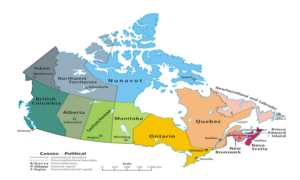Could Canada Become the 51st State? A Unique Perspective from Extreme Investor Network

In the realm of political and economic discussions, the question of whether Canada should become the 51st state of the United States always incites a lively debate. Recently, former President Donald Trump reignited this conversation by proposing such a merger. As members of the Extreme Investor Network, we want to delve deeper into this idea, exploring its economic implications and historical context while providing insights you won’t find anywhere else.
Economic Benefits: Why a Merger Makes Sense
When examining economics as a decisive factor, merging Canada with the U.S. does present compelling advantages. Currently, Canada faces internal trade barriers between its provinces, limiting economic potential and hampering growth. In contrast, under U.S. law, the states trade freely with one another, which enhances competition and fosters economic dynamism. Imagine a Canada without these barriers: a unified economy that operates without the friction causes by provincial trade restrictions.
Additionally, the mortgage landscape would undergo a significant transformation. Canadians currently face challenges in obtaining long-term mortgages. However, merging with the U.S. would not only provide access to a more robust mortgage market but likely result in lower interest rates. This shift could ultimately stimulate the housing market, allowing Canadians to invest in their properties with renewed vigor.
Cultural Retention: States with Unique Identities
Despite these economic benefits, it is crucial to recognize that Canada should not be viewed simply as a 51st state in name. Instead, each province could retain its distinct cultural identity, functioning akin to individual states within a more comprehensive framework. This respect for cultural differences would not only nourish local traditions but also enrich the collective collaboration that a unified currency and economy would provide.
Some readers may liken this scenario to the Eurozone, where varying countries utilize a shared currency, fostering trade while maintaining their unique identities. A similar arrangement could allow Canada and the U.S. to sidestep foreign exchange risks, creating a stable economic environment ripe for growth.
A Glimpse into History: The Early Thoughts on Merging
Interestingly, the idea of merging Canada and the U.S. is not just a recent talking point; it has roots tracing back to the American Revolution. In 1777, the Articles of Confederation even included pre-approval mentions for the Province of Quebec to join the United States as it stood against British rule. This historical backdrop highlights that proponents of this idea have existed for centuries, challenging the notion that it is merely a fleeting political quip.
Timing and Future Prospects
Our advanced economic models suggest that the optimal windows for considering such a merger could present themselves in 2026 and 2028. As the geopolitical landscape continues to evolve, the question remains: Does Canada see potential benefits in aligning more closely with the United States? Are Canadians ready to think outside the box about their economic future?
At Extreme Investor Network, we believe that debates like these are essential for exploring the economic fabric of North America. With ongoing shifts in global economics, it’s vital for investors, policymakers, and citizens alike to remain informed and engaged.
Final Thoughts
The prospect of Canada as the 51st state of the U.S. opens up several avenues for exploration – from economic advantages to cultural preservation. While this proposal may seem radical to some, it is rooted in deep historical context and pragmatic economic theory. As conversations about unification continue, ensure you stay updated with Extreme Investor Network, where we provide unique insights and in-depth analyses designed to guide your investment strategies in this ever-changing world.
Together, let’s navigate the future of North America.

